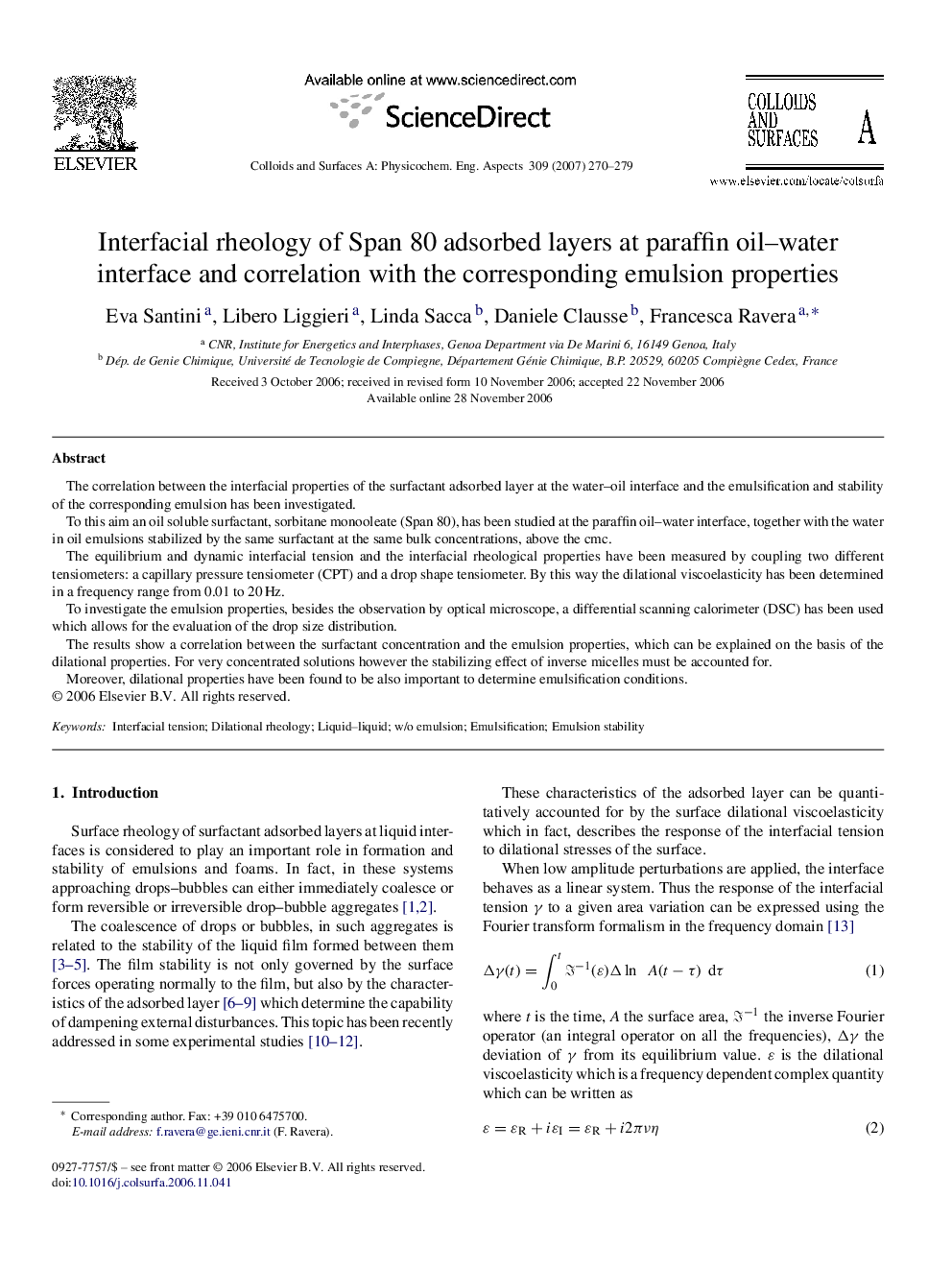| Article ID | Journal | Published Year | Pages | File Type |
|---|---|---|---|---|
| 597305 | Colloids and Surfaces A: Physicochemical and Engineering Aspects | 2007 | 10 Pages |
The correlation between the interfacial properties of the surfactant adsorbed layer at the water–oil interface and the emulsification and stability of the corresponding emulsion has been investigated.To this aim an oil soluble surfactant, sorbitane monooleate (Span 80), has been studied at the paraffin oil–water interface, together with the water in oil emulsions stabilized by the same surfactant at the same bulk concentrations, above the cmc.The equilibrium and dynamic interfacial tension and the interfacial rheological properties have been measured by coupling two different tensiometers: a capillary pressure tensiometer (CPT) and a drop shape tensiometer. By this way the dilational viscoelasticity has been determined in a frequency range from 0.01 to 20 Hz.To investigate the emulsion properties, besides the observation by optical microscope, a differential scanning calorimeter (DSC) has been used which allows for the evaluation of the drop size distribution.The results show a correlation between the surfactant concentration and the emulsion properties, which can be explained on the basis of the dilational properties. For very concentrated solutions however the stabilizing effect of inverse micelles must be accounted for.Moreover, dilational properties have been found to be also important to determine emulsification conditions.
